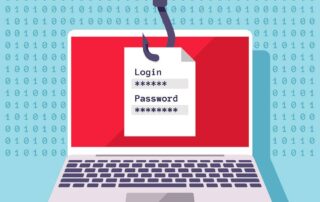
Make history. Don’t become it. And man do things change fast. It seems we have a monthly economic crisis than things change fast. Whether it be rising or falling infection rates, Inflation, Oil prices, new wars…you name it. Things seem to change so fast we now have a new monthly economic crisis every single month.
Without a doubt, COVID-19 has dominated the news cycle for the past several months, causing a major economic crisis on every level from individual households to the planet as a whole. On one hand, it feels like everything has changed in an instant — on the other, it’s starting to feel like it’s always been this way.
But the best business leaders were planning for a monthly economic crisis like this long before the outbreak first started to make headlines. They understood from the outset that whether the market is booming or busting, a solid plan will help their business succeed.
If these uncertain times took you by surprise, however, it’s not too late to take a look at ways to remain a steadfast leader and help ensure your business’ success.
Learn From the Past, buy Don’t Necessarily Repeat It
Some leaders we know are using the financial crisis of 2008-09 as a jumping off-point for their current planning. And while it is wise to learn from successes of the past, the best leaders understand that they are planning for a new future, and that the past is just that — something that happened once upon a time. And what turned into big wins for HR, operations, sales, marketing and other departments 10 years ago might not see such success in 2020.
After all, that epidemic was purely financial — business leaders didn’t have to worry about the added public health and safety concerns of their employees, customers or business partners. Because of this, it’s important to think of this monthly economic crisis recovery as something entirely new.
One of the biggest differences today, for example, is the idea that employees can work successfully from home. Many companies who thought it would never work, who discouraged it in the past, are not only going it — they’re doing it well. And they’re finding that what their employees need to do great work isn’t necessarily what tradition has taught. As companies rework their budgets for the future, what will that mean for overhead costs like physical office space in the future?
Businesses have also figured out how to deliver essential goods and services in completely new ways, including the handling (or not) of goods during the shopping process. How will these new processes change not only the employee experience, but the customer experience in the future? None of these things were factors in past financial crises — they weren’t even factors at the beginning of 2020. But in short order, the best leaders are making them work.
Make a Plan for a New Monthly Economic Crisis
A worldwide lockdown in reaction to a microscopic killer is something none of us has ever experienced before. So the first step to surviving it is to truly understand it and its effects on every level from the global economy to your organization.
Your strategy is likely to include short and long-term financial fixes, as well as social-distancing strategies to ensure that your employees remain healthy as they return to work. Having a plan can serve two purposes — helping business get back to normal today, but also painting a picture of what things will look like in one, two, or even 10 years.
You might be amazed at how your vision board looks at the end of 2020 vs. the start. But picturing that new endgame now — then taking a breath and the first step to get there — can put you ahead of the financial recovery curve.
Stick to the Plan
One of the common bits of advice you’re likely to hear these days is to turn off the news — and for good reason. On any given day, life with COVID-19 can feel like an explosion, a slow burn, or some combination of the two. Headlines can be scary, advice can be conflicting, and the stock market can swing wildly in either direction, or maybe even both directions in one day.
When it feels like a giant swirl of chaos, it’s important to remember that this is about the success of your company — no matter what’s happening around it.
A solid plan and some sticktoitiveness could bring about the chance to not only succeed, but to become trailblazers for others in your industry — to set the standard for what will work in American business 2.0
Be Open to Detours
Even as you forge ahead with a plan that’s best for your business, keep in mind that no one knows what returning to full economic capacity will look like, and that no organization exists in a bubble. Especially if you rely on the supply chain to operate your business, understand that your third-party partners have also likely been through some rough seas.
Also keep in mind that as the planet re-emerges, the entire world economy will be hitting the reset button at the same time, from end users to suppliers and everyone in between. As a consumer, you like others will yearn for a return to normal as soon as possible, but as a business leader, you’ll understand that it isn’t that easy.
It’s reasonable to expect some hiccups as the bandwidth adjusts, and flexibility and creativity are key to getting through them. In fact, being able to wear both hats could put you in a unique position to meet both sets of needs quickly yet safely.
Keep Your Eyes on the Future
As the old saying goes, it’s important to look at the glass as half-full. But in times of uncertainty, it’s also smart to be ready in case it springs a leak. Being a proactive leader means learning from the past and adjusting for the future. It means creating a strong plan and sticking to it — although not without flexibility.
Acting as a strong leader who creates headlines, rather than one who reacts to what’s already happened, isn’t just about succeeding. It’s also an opportunity to be a pioneer in a new and uncharted post-virus business landscape. Remember, create a plan, stick to the plan, be open to detours, and keep your eyes on the future.
Corban OneSource is a Mid-Market Human Resource Outsourcer or HRO for companies of 75 to 6,000 employees. Are you looking to outsource the core HR functions of Payroll, Benefits Administration, and HR Support? Find out more here.



